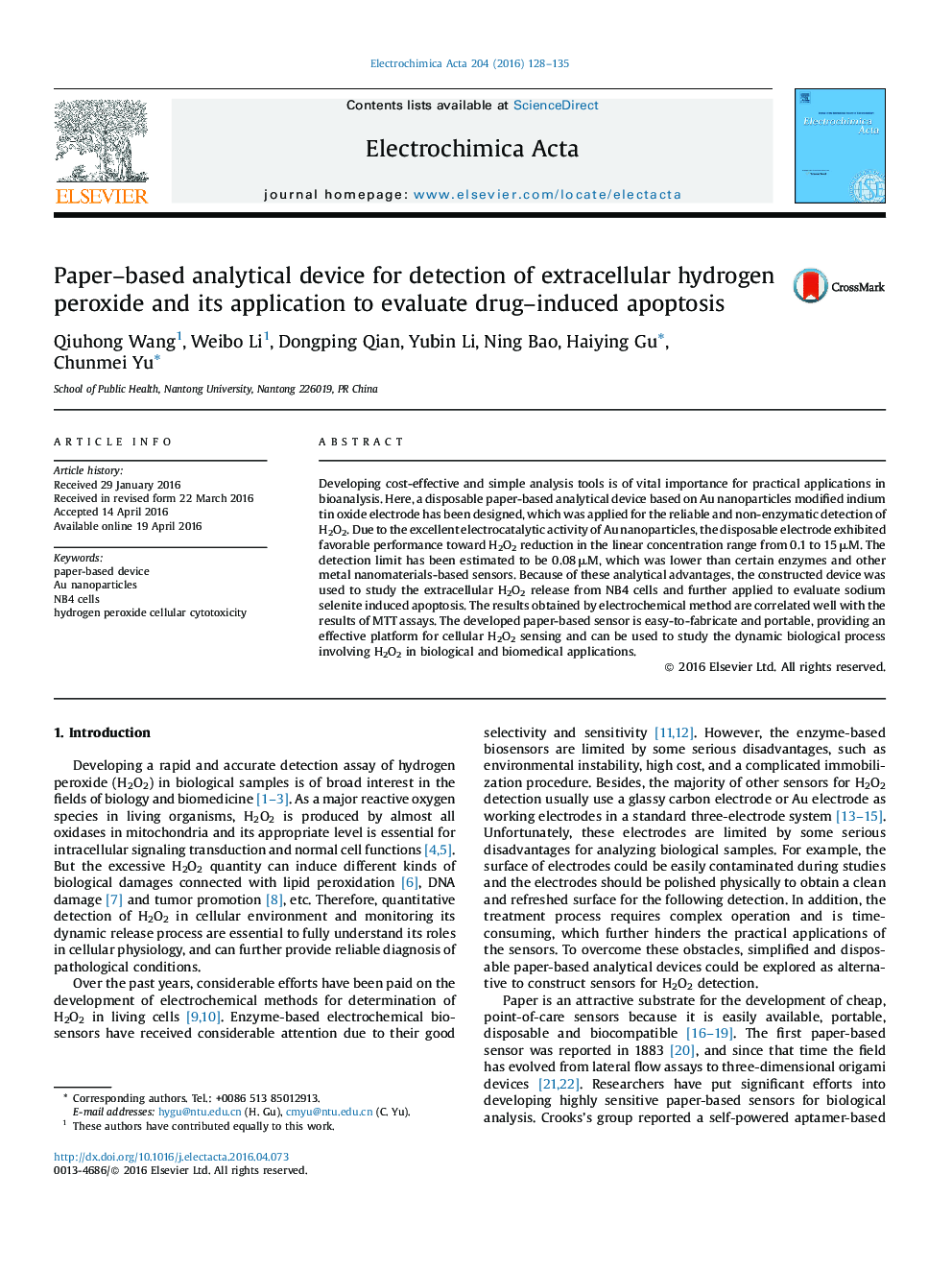| کد مقاله | کد نشریه | سال انتشار | مقاله انگلیسی | نسخه تمام متن |
|---|---|---|---|---|
| 182849 | 459526 | 2016 | 8 صفحه PDF | دانلود رایگان |
• A paper-based analytical device based on Au nanoparticles modified indium tin oxide electrode has been designed.
• The proposed device exhibited low detection limit for the electrocatalytical reduction of H2O2.
• The sensor could be used to detect cellular H2O2 released from living cells and further evaluate drug-induced apoptosis.
• The approach is low-cost, portable and promising in biological and biomedical applications.
Developing cost-effective and simple analysis tools is of vital importance for practical applications in bioanalysis. Here, a disposable paper-based analytical device based on Au nanoparticles modified indium tin oxide electrode has been designed, which was applied for the reliable and non-enzymatic detection of H2O2. Due to the excellent electrocatalytic activity of Au nanoparticles, the disposable electrode exhibited favorable performance toward H2O2 reduction in the linear concentration range from 0.1 to 15 μM. The detection limit has been estimated to be 0.08 μM, which was lower than certain enzymes and other metal nanomaterials-based sensors. Because of these analytical advantages, the constructed device was used to study the extracellular H2O2 release from NB4 cells and further applied to evaluate sodium selenite induced apoptosis. The results obtained by electrochemical method are correlated well with the results of MTT assays. The developed paper-based sensor is easy-to-fabricate and portable, providing an effective platform for cellular H2O2 sensing and can be used to study the dynamic biological process involving H2O2 in biological and biomedical applications.
A disposable paper-based device based on Au nanoparticles modified indium tin oxide electrode has been designed, which was used to study the extracellular H2O2 release from NB4 cells and further applied to evaluate drug-induced apoptosis.Figure optionsDownload as PowerPoint slide
Journal: Electrochimica Acta - Volume 204, 20 June 2016, Pages 128–135
